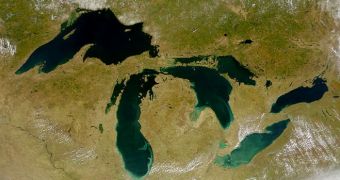For many years, experts looking at the possible effects that the last Ice Age may have had on indigenous populations in North America said that the events triggered major repercussions. The experts believed that the Younger Dryas period specifically was the most harmful. In geological terms, this is a period of a few millennia that began right at the end of the Ice Age, as the planet was starting to warm. Temperatures dropped suddenly, and the cold spell then subsequently receded and ended.
The Younger Dryas period did not last for long, spanning between 12,800 and 11,500 years ago, give or take 70 years. However, its main trait is that it happened very fast, as after a cataclysmic event. Until now, scientists believed that the first American-Paleoindian groups to inhabit the continent were placed under intense pressure from the sudden changes. They argued that this would have sparked the emergence of a number of evolutionary adaptations, which the individuals needed in order to survive the freeze. But recent data from a new study seems to suggest that this was not the case.
The groups mentioned in the studies are considered to be the first humans to travel to the American continent, at the end of the Pleistocene period, when the Ice Age was taking its last breaths. New datasets from investigators at the University of Arizona in Tucson (UAT) show that, most likely, the short cold spell did not place such large pressure on these groups. The team believes that the earliest inhabitants of the American continent were largely undisturbed by the changes in their climate. The group, which was led by expert Vance Holliday, collaborated with colleagues from the Southern Methodist University in Dallas for the study. The SMU team was led by expert David Meltzer.
The joint team carried out an extensive review of climatic and environmental records spanning the Younger Dryas period, looking carefully at all pieces of climate evidence that might have affected Northern America. Important regions such as the Great Plains and the Rocky Mountains were found to have suffered very little at the hands of the dry spell, which means that groups living here might have felt no difference in overall conditions during the entire length of the geological period. Details of the new investigation appear in the latest issue the Journal of World Prehistory.
“All things considered, it is likely that across most of North America, south of the retreating ice sheets, Paleoindians were not constantly scrambling to keep up with Younger Dryas age climate changes. After all, adapting to changing climatic and environmental conditions was nothing new to them – it was what they did,” the authors write in their journal entry, AlphaGalileo reports.

 14 DAY TRIAL //
14 DAY TRIAL //